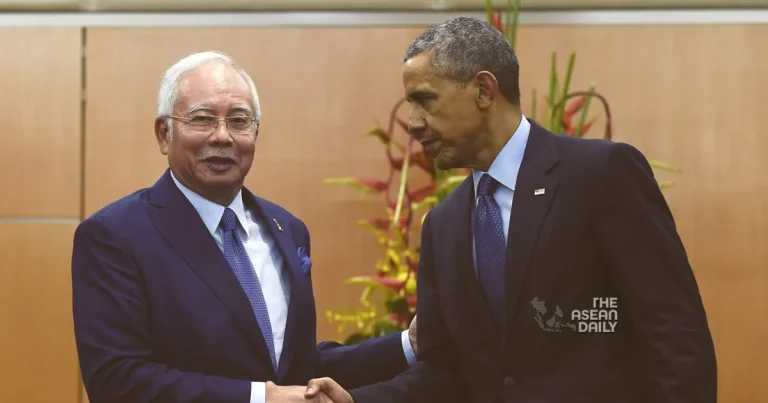5-6-2024 (KUALA LUMPUR) As the world grapples with shifting geopolitical dynamics, long-standing alliances are being put to the test. One such partnership, the comprehensive agreement between Malaysia and the United States, celebrated its 10th anniversary this year, prompting a reassessment of the ties that bind these two nations.
In the bustling metropolis of Kuala Lumpur, the echoes of this milestone reverberate through the corridors of power. Established in April 2014, the comprehensive partnership was conceived as a framework to enhance bilateral relations, spanning political, economic, military, and cultural spheres. Its inception seemed a natural progression, given the steady and solid bonds forged between the two countries since Malaysia’s independence.
However, the intervening years have been marked by domestic and global crises, political upheavals, and diverging priorities, casting a shadow over the once-promising partnership. As the renowned journalist James Fallows aptly observed, “In an era of constant change, even the most enduring alliances must evolve or risk becoming obsolete.”
The announcement of the comprehensive partnership came at a pivotal juncture. It was made during the fervor of Barack Obama’s historic visit to Malaysia, the first by a sitting US president in nearly half a century. The strategic opportunity presented by the Obama administration’s “pivot to Asia” provided the impetus for both nations to strengthen their relationship.
Yet, it was the personal charisma of the “most Southeast Asian of US presidents” that defined the sensibility of the partnership. Grounding the bilateral relationship in both word and deed, the intention was to buffer it against the political vagaries of both countries – a prescient foresight, as the end of Obama’s second term, and the Asia pivot, loomed on the horizon.
The ascension of Donald Trump to the White House brought considerable upheaval. While the institution of his Muslim ban did not directly affect Malaysia, it put the country’s Muslim-majority population on high alert. The trashing of multilateral instruments, including the Trans-Pacific Partnership agreement, on which Malaysian leaders had staked precious political capital, left a bitter taste in Putrajaya.
While there were attempts to project a strengthened partnership, such as Trump’s welcoming of Prime Minister Najib Razak to the White House in 2017, little of substance materialized beyond cursory official exchanges. The US Department of Justice’s actions against the Malaysian sovereign wealth fund 1MDB, implicating Najib while he was in office, further strained ties.
Moreover, the growing US rancor towards China cast an uncomfortable pall over Malaysia and much of Southeast Asia, where there was reticence to accede to US pressure to align with the West.
Institutionalizing a bilateral relationship against capriciousness is one challenge; insulating it against domestic and external exigencies that divert political attention and policy resources is quite another. No one could have predicted the occurrence of a global pandemic just a few years later, which would reshape the world as we knew it.
As the US grappled with hundreds of thousands of Covid-19 deaths, a change in government, and an attempted insurrection, Malaysia experienced its own political turmoil. Four prime ministers have taken office since Najib’s government was ousted in the 2018 general election, and senior politicians and advisers have faced high-profile charges, with Najib himself serving a prison sentence for corruption linked to the 1MDB scandal.
Prime Minister Anwar Ibrahim’s coalition government, formed at the end of 2022, hung by a thread amidst the churn of religious, racial, and royal sensitivities. Reviving the post-pandemic economy and navigating intensifying US-China competition have also preoccupied Putrajaya.
To be fair, the Biden administration has made efforts to rekindle the bilateral spark. US cabinet secretaries, including Antony Blinken, Gina Raimondo, and Katherine Tai, as well as senior defense staff, have held meetings in Malaysia. However, Washington lacks a comprehensive strategy for engaging Putrajaya beyond edging out Beijing’s influence.
There is also an unstated hierarchy among the US’ Southeast Asian partners, with Malaysia not seeming to figure prominently, except for its place in the semiconductor value chain.
This should not be cause for angst, given the insurmountable positional and expectational gaps between the countries. For the US, Putrajaya’s refusal to castigate Beijing, even in the face of blatant belligerence, is exasperating. For Malaysia, Washington’s foreign policy misadventures and selective adherence to international law have long been a source of friction. Anwar’s unwavering defense of Palestine and support for Hamas, designated a terrorist group by the US but not universally, is just the latest iteration of this schism.
Despite these challenges, there remains optimism about a revitalized US-Malaysia comprehensive partnership. However, disaggregating the bilateral relationship between principle and pragmatism could prove more difficult to defend, especially with competing domestic pressures in Malaysia and the continued invalidation of international legal institutions by the US.
Perhaps a sign of a maturing US-Malaysia partnership on its 10th anniversary would be an honest review of its possibilities based on its constraints. These two nations have remained indispensable, long-term friends, but the world has changed dramatically. It is time for the relationship to be re-examined against this new reality, fostering a partnership that is both principled and pragmatic, enduring and evolving.




